Lagerstroemia – A Southern Icon Heralds the Height of Summer
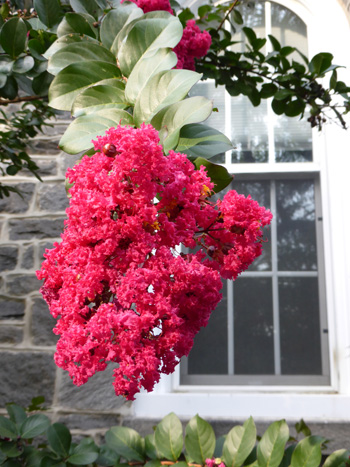 2012 was declared the Year of the crapemyrtle in the Scott Arboretum curatorial office. Each year a specific genus is chosen for an in-depth review. The process is designed to pinpoint the arboretum’s strengths as well as shortcomings for the particular genus. Research coupled with interaction with other horticulture professionals and institutions results in determining which species and cultivars should be grown. In the case of Lagerstroemia is a genus which has seen a reenergized appreciation due to a bevy of new introductions touting disease resistance, hardiness, diminutiveness, and foliage variation so our crape myrtle collection is relatively small. While one goal is to add to the collection, the arboretum does not have the intention, nor the space, to grow every variation available, but rather seeks to expand the palette with those deemed superior to promote the best plants for the Delaware Valley.
2012 was declared the Year of the crapemyrtle in the Scott Arboretum curatorial office. Each year a specific genus is chosen for an in-depth review. The process is designed to pinpoint the arboretum’s strengths as well as shortcomings for the particular genus. Research coupled with interaction with other horticulture professionals and institutions results in determining which species and cultivars should be grown. In the case of Lagerstroemia is a genus which has seen a reenergized appreciation due to a bevy of new introductions touting disease resistance, hardiness, diminutiveness, and foliage variation so our crape myrtle collection is relatively small. While one goal is to add to the collection, the arboretum does not have the intention, nor the space, to grow every variation available, but rather seeks to expand the palette with those deemed superior to promote the best plants for the Delaware Valley.
Several species and their hybrids have resulted in the plethora of offerings; but all have similar requirements for success. Generally, Lagerstroemia benefit from full sun, good air movement, and well draining soil on the acidic side. Plants bloom on new wood. This trait means that growing Lagerstroemia in the northern ranges of their hardiness may lead the plants to act more like to herbaceous perennials than woody shrubs or small trees.
Michael Dirr, noted and respected plantsman for all things woody, begins the section on Lagerstroemia with the following introduction: “To travel the South from June through August is to understand why crapemyrtles are the best flowering shrubs/trees for gardens large and small. Without question, they are premier flowering woody landscape plants for zones 7 to 10, the Southeast, Southwest, and into California.” Fewer plants embody the south’s plant palette quite like live oaks dripping with Spanish moss, camellias, and crapemyrtles.
While flowers and bark are the primary appeal, the genus’ attributes don’t stop there. Lagerstroemia is a tough and versatile plant, evident from parking lot, strip mall, and highway plantings throughout the south. Once established, plants possess a strong degree of drought tolerance. Fall color on particular cultivars, ‘Sioux’ being an example, turn orange and red in the autumn. Variation in growth habit and height means that there is a cultivar bound to fit into any garden situation. Plants are fast-growing and quickly create a presence in the landscape.
Two species are responsible for the bevy of new cultivars. Lagerstroemia indica, the common crapemyrtle, is best known for the fluffy, liliac-like flower panicles of red, pink, purple, and white. Once established, L. indica is capable of withstanding considerable drought. Bark exfoliates with age, slowly revealing smooth, sinewy inner bark.
Dramatic, patchy bark is the strong suit of Lagerstoemia fauriei (syn. L. subcostata var. fauriei). Bark, in shades of cinnamon, mocha, and dark red to maroon, with colors often juxtaposed together, makes L. fauriei an unmatched presence in the winter landscape. The stems and trunks take on an entirely different characteristic after a rain, revealing deeper and more intense coloration. Flowers are not nearly as dramatic on Lagerstroemia fauriei.
Dr. Donald Egolf, noted scientist, breeder, and gardener, is credited with introducing many crapemyrtles. Egolf crossed L. faurieri and L. indicia, and L. limii, drawing forth the very best attributes each had to offer. The resulting hybrids are still regarded as some of the very best, combining rich flower color and dynamic bark characteristics. The U.S. National Arboretum in Washington D.C. has an extensive breeding program.
While an iconic plant of the south, Lagerstromia has experienced its fair share of scrutiny. Disease, particularly powdery mildew can be a bane, especially in humid southeastern Pennsylvania. Powdery mildew is a fungus that is most damaging and prevalent during times of high humidity, lack of rain, and poor air circulation. Be mindful of powdery mildew when selecting a crapemyrtle as plants possess varying degrees of tolerance.
The second issue plaguing crapemyrtle is an affliction for which the plant bears no responsibility: crape murder! The pruning act entails lopping the stems and branches off at an arbitrary height, in effect giving the plant a flattop buzz cut. While reasoning for such pruning abounds, the act is done to keep to plant at a particular height.
Lagerstroemia cultivars vary greatly in size and plants are naturally multi-stemmed. First and foremost, do your research. Research the ultimate size and choose accordingly for the intended space. Choose 3 – 7 main stems and cut away any suckers at the base. Remove dead stems and branches as needed. Otherwise, plants need little additional pruning. The act of crape murder has generated much buzz, so much so that county extension agents have written articles and garden centers and mail order companies, including Plant Delights Nursery, have taken to the web in an attempt to inform the public. If so inclined, one can even join the Stop Crape Murder Facebook page.
The United States National Arboretum has several informative web pages to help gardeners further explore Lagerstroemia. The Crapemyrtle Quick Guide Chart lists 29 of the arboretum’s released crapemyrtles and includes descriptions of flower color, bark color, fall color, ultimate plant size, and growth habit. Another link, Crapemyrtle Questions and Answers fields several of the most common questions asked about the genus. Questions range from how to select for a particular site, to dealing with pruning, hardiness, general care, and insect and diseases issues.
Andrew Bunting, Scott Arboretum Curator, along with Greg Paige, Arboretum Curator at Bartlett Tree Research Lab and Arboretum, recently spent several days traveling through the southeastern United States collecting Lagerstroemia. Institutions visited included University of Florida – North Florida Research and Education Center, the Mobile Alabama area including Green Nursery, and Van der Giessen Nursery, Atlanta Botanical Garden, Ozzie Johnson’s home garden, and Bartlett Tree Research Laboratories and Arboretum. Cuttings will be propagated in the Wister Center Propagation House and grown on for several seasons. Look for future Lagerstroemia additions throughout the Scott Arboretum.





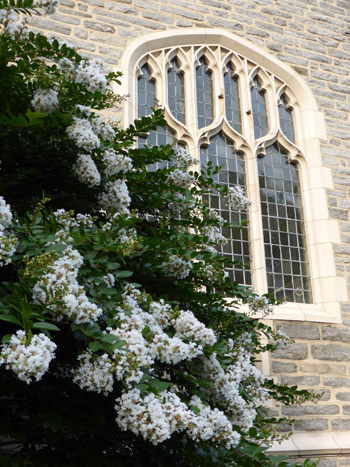
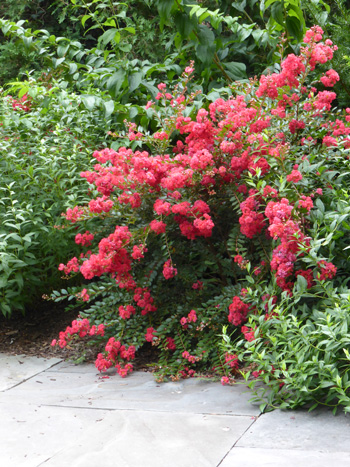

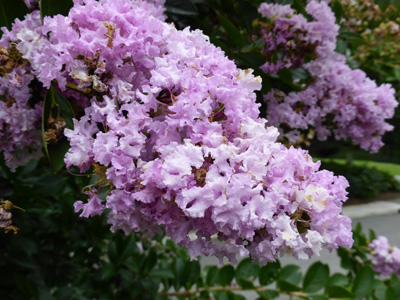
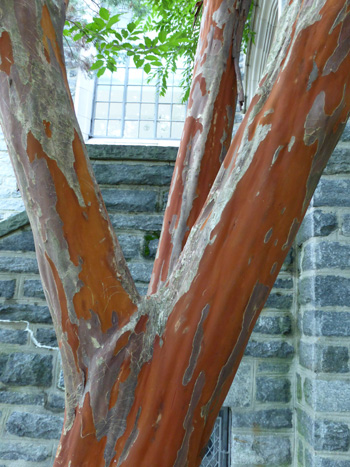
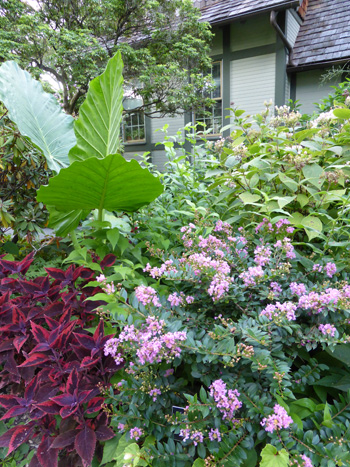
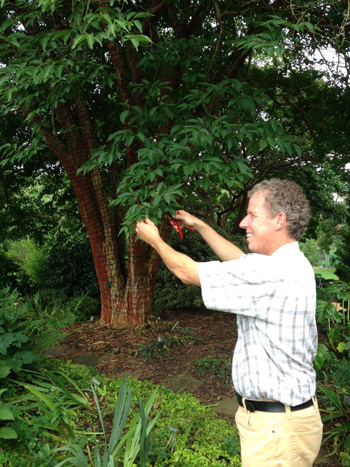
No Comments